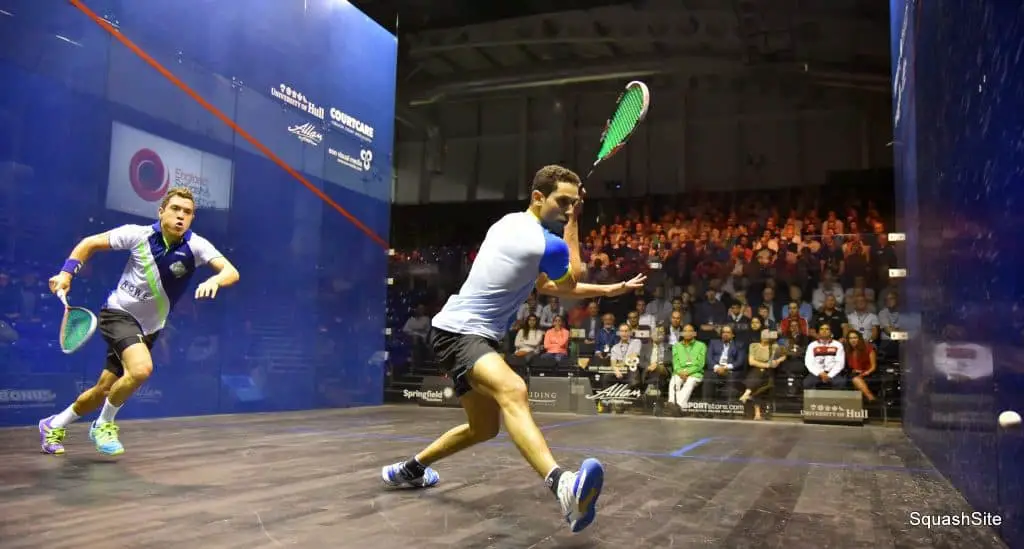[Updated on 1 January 2024] When you watch a pro squash match, it may be easy to think that you can replicate the level of play. But watching a match and playing are two different things, as all players know when they step on the court with a better player. Often what separates great players physically is their movement on the court, which comes down to weight transfer and balance on the court.
Weight transfer and balance on the court can be the difference maker. Whether it comes down to the ease of movement on the court or to the deception a player can put on a shot, do not neglect this area of your game!
Contents
Balance and Weight Transfer in Squash
If we go back to science class, one of the fundamental truths of science is that forces exert themselves greater when moving in the same direction. In squash, this applies to the transfer of force you put on the ball, and it all begins with your feet setup before striking the ball.

For example, moving while striking the ball will affect the accuracy of the shot, but it can used to increase the power of the shot. A forward motion while striking the ball may increase the pace of the shot, but it will make it more difficult to recover. This is because you are displacing yourself from the ‘T’ of the court after hitting the ball.
Balance is key when applying weight transfer techniques as it can get players into trouble. Steady the feet as it is necessary to have a wide base of support. If the feet are still moving when the weight transfer occurs, it will make the shot inaccurate, as it will pull the swing out of alignment from the target and prevents a strong recovery out of the shot.
Balance is also thrown of by the lifting of the head as the striking of the ball occurs, this may shift the direction of weight transfer or prevent it completely.
Examples
Watching the video below of Alison Waters shows her setup and patience in moving El Welily around the court like a puppet for the eventual drop shot to the front left wall.
And here is an example of how not to move around on the court. Obviously these are new players to the game, but their position on the court sets off the domino effect of the diving and lunging for balls. Not how you stay balanced on the court (try not to laugh, we dare you)!

Mistakes to Avoid
Moving off the ball, or stepping out of your shot too early, (prior to the follow through) will shift the direction of the stroke and attenuate the power of the shot.
Your footwork and alignment are important when hitting your shots. Striking the ball when your feet aren’t set will hinder the shot accuracy as well as your recovery to the center court. The speed of recovery will slowly deteriorate and the shot consistency will begin to fail.
Always focus on being balanced when striking by maintaining balance on both the front and back foot. You can test your balance by attempting to swing while having all your weight on one leg. It is important to be able to step back towards the center court after striking the ball. This is different than taking a step forward or stepping into your shot, then turning around and moving back.
Conclusion
Developing the movement and judgement required to strike the ball accurately and then regain balance as well as recover to the center court will come with practice. Top players do not develop this skill overnight. But players at every level can stand to focus more on setting their feet to hit the ball tighter and with more pace.
Leave a Reply